Faculty support programs: Call for proposals
From Judith Thomas, Director of Faculty Programs
Applications are now being accepted for three Library programs: Research Sprints, Course Enrichment Grants, and Affordability & Equity Grants.
Course Enrichment Grants provide support to faculty who would like to enhance students’ abilities to seek, evaluate, manage, and use information and data, as well as create or improve on media-rich class assignments. Recipients receive a $2,500 award (as summer wages or to a research account) and dedicated support from experienced librarians, technologists, or other library staff.
- Open to anyone holding a faculty appointment at the University of Virginia who is teaching a semester-long course (Fall 2023; J-Term, Spring, Summer 2024).
- Application deadline: 2/17/2023
Research Sprints offer an intensive work environment for faculty who want to concentrate on a new or existing project. Individuals or teams get the undivided attention of a team of librarians for projects related to any phase or aspect of their research, scholarship, or teaching. An information sessions will be held on Wednesday, Feb. 1, 9-9:45am.
- Open to anyone holding a faculty appointment as well as senior professional research staff at the University of Virginia.
- Sprint week: May 15-19, 2023
- Application deadline: 2/17/2023
The Affordability & Equity Grant Program is a Jefferson Trust-funded program that provides support to faculty who want to adopt, adapt, or create open educational resources. The program is open to anyone holding a faculty appointment at the University of Virginia who is teaching a two-, three-, or four-credit course. Applications are accepted on a rolling basis.
If you have any questions about any aspect of these programs, please email Judith Thomas at jthomas@virginia.edu.
The Central Gazette: Charlottesville's first paper now available online
The Central Gazette, established by brothers Clement Pynes McKennie and John Harris McKennie, was Charlottesville’s first newspaper, running from January 1820 until July 1827. A four-page weekly available at a subscription rate of $3 per year, the Central Gazette aggregated items of foreign and domestic news and posted articles and notices of local and regional interest. In the first issue, the publishers laid out the paper’s intended scope: “Besides detailing the general intelligence of the day, it will give a copious account of every transaction appertaining to Agriculture and the general prosperity of Virginia—her seat of learning, her emporium of Arts and her schools of Science.” The paper included marriage notices, obituaries, notices of items found or stolen, want ads, and advertisements for services and goods. The University of Virginia was an early advertiser; Proctor Arthur S. Brockenbrough posted a notice in the March 11, 1820 issue promising “liberal wages” for laborers willing to work at UVA. In July 1827 the paper was succeeded by the Virginia Advocate, which ran until 1860 when the title changed to the Charlottesville Advocate briefly before ceasing publication at the start of the Civil War.
The University of Virginia Library holds 157 issues of the Central Gazette, which are now available online through a partnership with the Library of Virginia, hosted on their Virginia Chronicle portal (virginiachronicle.com), which offers digitized versions of historical Virginia newspapers. The issues were first prepared for scanning by the UVA Library’s Preservation department, before being scanned in-house by the Digital Production Group and sent to the Library of Virginia in April 2022.
The available issues on the Virginia Chronicle portal include an unbroken run from Vol. I, No. 1 of January 29, 1820, through September 20, 1822. The last digitized issue is Vol. VIII, No. 369 published on Saturday, March 24, 1827. All of the issues are fully text searchable, and viewers who create an account and log in to the portal can help correct the digitized text, which has been automatically generated by optical character recognition.
This story originally appeared in the Library’s Annual Report for FY 2022-23. Download the full PDF to read more.
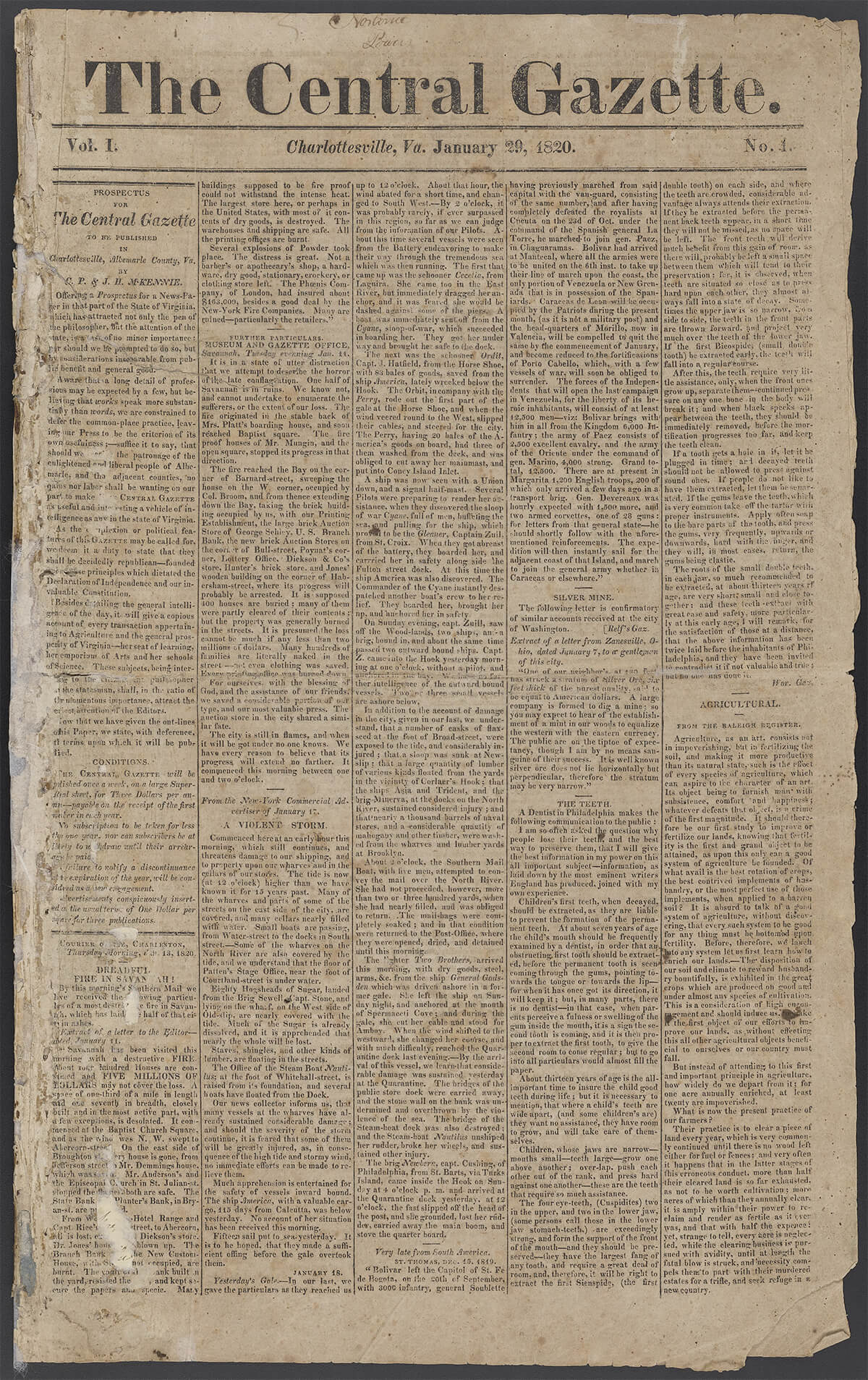
Bring the Library into your classroom
Jacob Hopkins knew from a young age that he wanted to work with books and people, either in a bookstore or a library. “I think what I have always liked about libraries is that everyday practice of teaching and learning, as well as meeting people where they are,” he said.
Hopkins joined the Albert and Shirley Small Special Collections Library as an Instruction Librarian in August, becoming the newest member of a vast network of teaching librarians at the University of Virginia Library serving UVA and the local community. In the past calendar year, UVA Library staff conducted nearly 650 instruction sessions, orientations, and tutorials with students, faculty, staff, and community members, introducing them to the Library and sharpening their critical thinking skills.
Support in the Classroom
The Library offers teaching support in myriad ways: UVA instructors can request a Library class to improve their students’ research and data management skills; request an instruction session from Special Collections, where students can get hands-on experience with archives that connect to their courses; request a class in video and audio production in the Robertson Media Center; or schedule a consultation for spatial technologies fieldwork from the Scholars’ Lab.
No matter what they are teaching, all librarians are driven to “establish the Library as a resource, as a place full of friendly people, and as a place where you can get answers,” said Chris Ruotolo, who leads a team of subject librarians in the arts and humanities and has worked at the Library for 25 years, starting when she herself was a graduate student. “The idea of getting librarians into the classroom, or better yet bringing students into library classrooms, has always been a priority.”
Many teaching librarians have earned subject-specific master’s or doctoral degrees before joining the Library, making them experts in their fields. Others, like Hopkins, held teaching fellowship positions while obtaining their Master of Library and Information Science degrees, learning how to create lesson plans and assess their own instruction as librarians. Hopkins and his Special Collections colleagues teach roughly 60 classes a semester, using items such as ancient clay tablets from the Mesopotamian Sumer Empire to explore the history of writing and printing, and a first edition copy of Phyllis Wheatley’s “Poems on Various Subjects, Religious and Moral” for students studying anything from poetry to race and class in the Atlantic World.
“We try to meet the needs of whatever class is coming in,” he said. “I aim to design learning experiences that represent the true diversity of lived experiences throughout human history. And I hope that that inspires students to think about how their own lives and experiences are being archived.” Hopkins urges faculty to get their teaching requests in early in the semester. “Even if they’re not coming in for another two to three months, they’ll want to go ahead and get that on the calendar, which I appreciate deeply because that gives us more time to plan.”
Requesting a Library instruction session is simple: just fill out a “Request a Library Class” form. From there, subject liaisons will arrange instruction for individual classes.
For a Special Collections session, fill out a “Special Collections Class Visits and Instruction” form.
Below, check out an overview of the multiple teaching resources the Library offers.
Teaching & Learning Team
The Library’s Teaching & Learning team helps undergraduate students develop information literacy and research skills through carefully planned classes. (Take a look at the team’s tutorials, tips, and tricks about all the Library has to offer on the “How do I …” page.) The team also gives orientations on using UVA Library resources to local high school classes.
“We have a survey that we ask our instructors to give to their students beforehand that helps us gauge how much experience, if any, students have with the library,” said Cecelia Parks, an Undergraduate Student Success Librarian who gives instruction sessions to College Advising, Writing & Rhetoric, and Engagements courses in the College of Arts & Sciences. “That’s been extremely helpful for us in figuring out where students are coming from and making sure that this session feels really relevant.”
Parks and Meridith Wolnick, who directs the Library’s Teaching & Learning programs, co-taught a session for a 56-person, first-year writing class this past fall that Victor Luftig, the course’s professor, described as “the best interaction with a library I have ever had in more than three decades of teaching.”
Luftig, an English professor, said the librarians’ amount of preparation and attention to students’ specific questions took the quality of the presentation to another level. “I think the Library, in its outward-facing capacities, is the purest expression of UVA’s commitment to its mission as a public institution,” he said in an email. “My students’ relation to the institution changed because of this session. One student could not get over the wealth of information that is available to him easily and without charge; he slapped both his hands on the desk in wonder and glee. My students’ attention was locked in for all 50 minutes.”
The Teaching & Learning team, which interacted with more than 5,000 people in the past academic year, also includes members of the Robertson Media Center, who offer classroom instruction sessions and consultations on audiovisual production; digital storytelling; 3D data processing and fabrication; equipment for innovation, design and production; and digital projects. The Robertson Media Center team has expertise in creative and cutting-edge technologies and works closely with faculty to design inclusive class sessions that build on students’ existing knowledge and skills.
To request an instruction session from the Teaching & Learning team, fill out the “Request a Library Class” form.
Research Data Services + Sciences Team
Overwhelmed by databases? Struggling to organize a massive amount of research? The Library’s Research Data Services + Sciences team can help. Led by Ricky Patterson, an astronomer by training, the team provides classroom support and outreach to all science disciplines at UVA.
The team’s subject liaisons, many of whom have graduate degrees in science disciplines, teach students best practices for data management — how to catalog, store, and preserve all data used in a research project so it can be easily accessed and understood in the future. They also instruct students in finding data sources — from basic keyword searches; to accessing articles in the many databases licensed by the Library; to lesser-known ways to access information, such as interlibrary loan and Libkey Nomad.
Finally, liaisons are available to meet with students who might be struggling with writing a thesis or presenting data or building a bibliography for the first time. “I always say that our liaisons create a safe space,” Patterson said. “If you’re under some deadline or you’re embarrassed because you don’t know the answer but it seems like everyone else does, come in and talk to a liaison one-on-one. It will be a safe space and it’s going to be okay.”
To request an instruction session from the Research Data Services + Sciences team, fill out the “Request a Library Class” form.
Arts & Humanities
Chris Ruotolo heads up a team of ten subject liaisons in the arts and humanities. These liaisons provide subject-specific instruction at all levels, but focus on providing more specialized classroom instruction to upper-level undergraduate and graduate classes.
“Our work tends to be as much about connecting students with specific sources — where to find resources on, say, modern Chinese history or on certain types of representation in media — as about helping them navigate the library. A lot of our preparation work involves making sure we know what is out there, and what are the best places to go. Many of these students are doing field work or community data-gathering, so our work also involves connecting students to resources beyond the library that can help them with their research.”
To request an instruction session from the Arts & Humanities team, fill out the “Request a Library Class” form.
Special Collections
For a recent ENWR class called “Monstrosity,” Jacob Hopkins led a Special Collections instruction session that invited students to examine vintage movie posters for “Dracula,” Arthur Conan Doyle’s “The Hound of the Baskervilles” in unique miniature book form, and a first edition of Mary Shelley’s “Frankenstein.”
“These sorts of items got students thinking about the idea of monsters and what they represent, but this was also an opportunity to show the wide variety of items in Special Collections — everything from literature to ephemera,” Hopkins said. “These items contribute to their research and scholarship, and they start to really tell an interesting story, opening up all these new pathways for exploration.”
In addition to working with objects in Special Collections, students learn how to search the archives in Virgo (the Library’s main catalog), as well as in other discovery platforms, such as Archival Resources of the Virginias (ARVAS).
To request an instruction session from Special Collections, fill out the “Special Collections Class Visits and Instruction” form.
Scholars’ Lab
The Scholars’ Lab is UVA Library’s community lab, specializing in the digital humanities, geographic information systems, mapping, scanning, and modeling of artifacts and historic architecture.
“We regularly provide cutting-edge spatial technologies fieldwork, training, and research, partnering with UVA faculty and students and regional community members to tell stories about, discover, and preserve our history,” said Scholars’ Lab Managing Director Amanda Visconti in an email.
The Scholars’ Lab regularly offers short consultation sessions to everyone in the UVA community. With at least one term’s notice, Scholars’ Lab staff will consider collaborating with faculty on syllabus design or module teaching, as well as co-teaching courses.
To contact the Scholars’ Lab, write to scholarslab@virginia.edu.
Research Tutorials
The Library offers in-depth tutorials to students, faculty, and staff to assist with specialized research projects and to provide individual instruction in the use of online databases and other library resources. To request a Research Tutorial, fill out a “Research Tutorial request” form.
Course Enrichment Grants
Course Enrichment Grants provide support to faculty who would like to boost their students’ abilities in seeking and using data, as well as to create new types of media-rich class assignments. Recipients receive a $2,500 award and dedicated support from experienced librarians, technologists, or other Library staff.
These grants are open to anyone holding a faculty appointment at UVA who is teaching a semester-long course (Fall, J-Term, Spring, or Summer).
The next application deadline is Feb. 17, 2023.
Expanding focus: New databases increase inclusivity
Scholars have increasingly been moving toward a more inclusive historical narrative, recognizing the contributions of marginalized communities that have often been glossed over in prominent histories. The Library's Collections team is helping to create a more complete and accurate narrative by amplifying voices of Native people; people of color; people questioning prescribed gender roles; people with disabilities; and ethnic, cultural, and religious minorities — adding new resources not for the sake of diversity alone but as a way promoting lasting, systemic change.
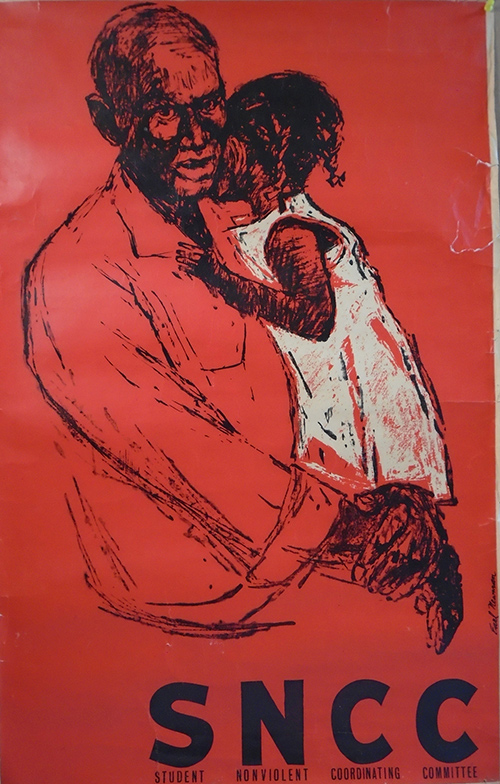
The Collections team has created a new inclusive collections guide featuring databases, journals, books, streaming video, and external resources for African American Studies, American Indian Studies, Asian and Pacific American Studies, Disability Studies, Gender and Sexuality, Latinx Studies, Jewish Studies, and more.
New databases in African American studies include Transcripts of the Malcolm X Assassination Trial, which sheds light on the assassination of the charismatic and controversial Muslim minister and civil rights leader; the SNCC Digital Gateway, examining the Student Nonviolent Coordinating Committee — the only national civil rights organization of the 1960s led by young people; and African Americans and Jim Crow: Repression and Protest, 1883-1922 — 1,000 fully searchable primary works providing critical insight into African American culture during Reconstruction and beyond.
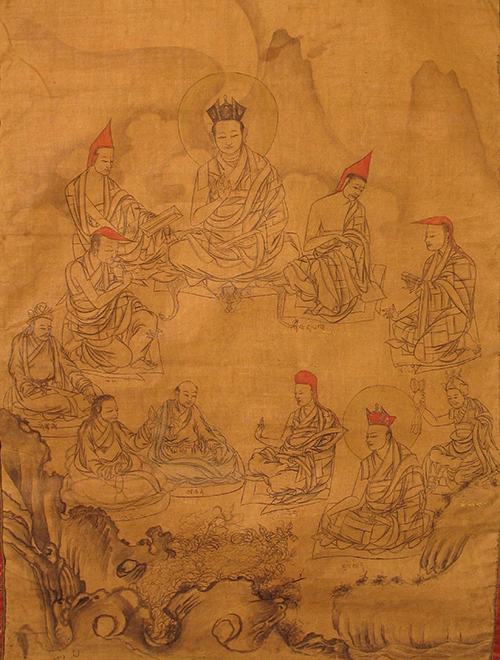
Other new inclusive databases include Gender: Identity and Social Change, which examines the history of gender and gender roles in the 19th century to the present; Treasury of Lives, with historical biographies of deceased scholars, masters, and leaders in traditional Himalayan and Inner Asian society and culture; and American Indians and the American West, 1809-1971, which contains documents related to the expulsion of Native peoples from their ancestral lands. Disability in the Modern World: History of a Social Movement, features primary sources about the roles that people with disabilities have played in all aspects of modern life, while the USC Shoah Foundation Visual History Archive is a fully streaming video collection of more than 55,000 interviews with survivors and other witnesses of the Holocaust and other genocides. Two other new online resources helping to increase global understanding are Policy Commons and Sabinet Collection. Policy Commons, the world’s largest database for public policy, allows scholars access to primary sources related to the most critical social issues and events of our time, and includes the ability to follow featured topics such as human rights, gender equality, and Indigenous peoples. Sabinet Collection offers the largest aggregation of African journals, news, and government information, helping to fill a gap identified by the Collections team in resources created by African scholars.
The databases are only a small sampling of the many online resources added over the past year that focus on issues of diversity, equity, and inclusion, as the Library continues its commitment to expand its collections with new voices and perspectives.
To peruse the full guide online, visit: guides.lib.virginia.edu/diverse-inclusive/home.
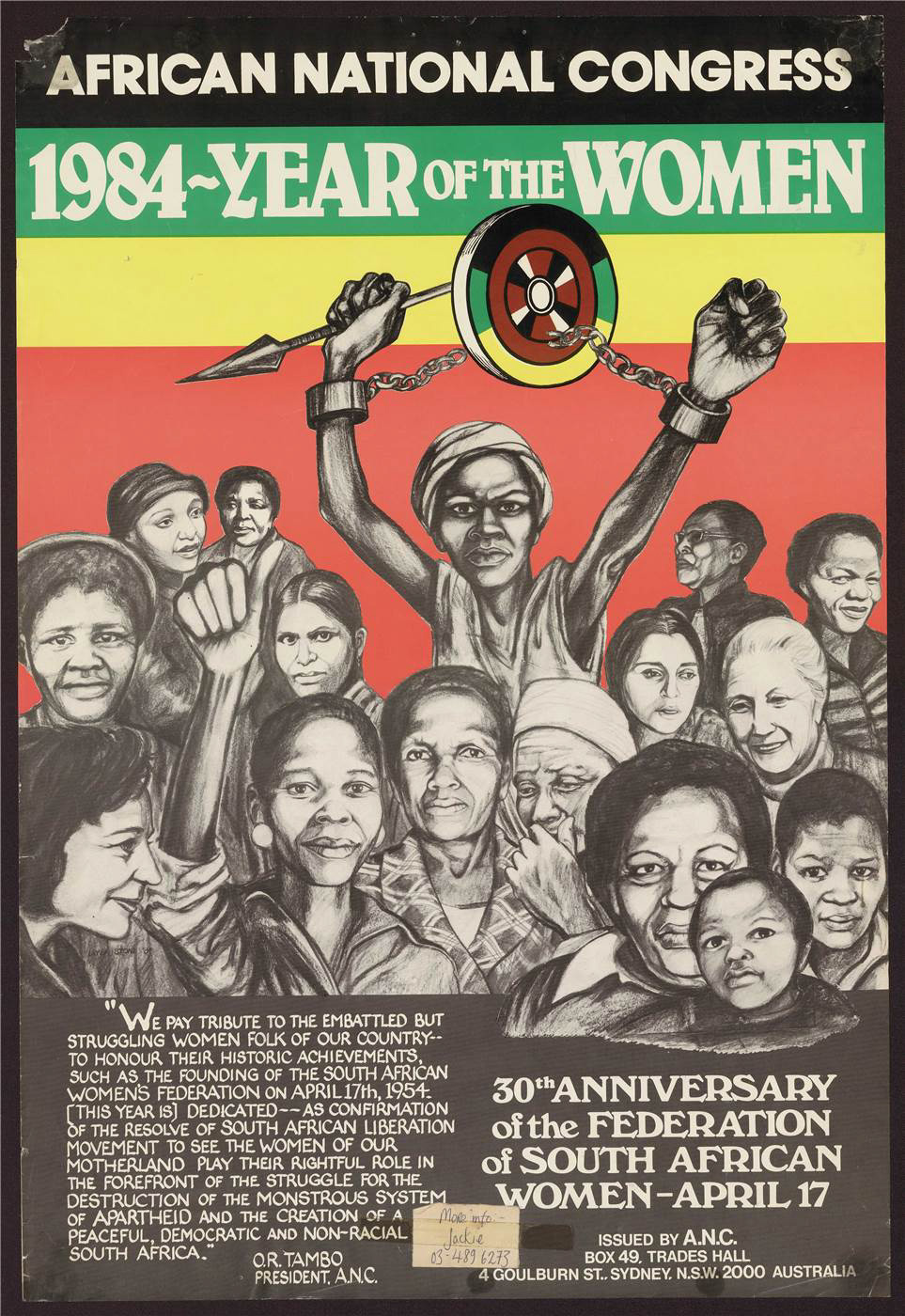
This story originally appeared in the Library’s Annual Report for FY 2022-23. Download the full PDF to read more.
Library website offers new pathways to services
Just before the winter break, the Library rolled out a refreshed version of its public website, library.virginia.edu. Virgo, LibGuides, and other Library interfaces remain unaffected.
The update is the public manifestation of work that has been ongoing for many years — to design and test a better user experience for new and expert Library users alike. The site will continue to evolve in response to user testing and feedback, and we appreciate your input and patience as progress continues.
Why change?
The main goal of the new site is to provide better navigation and discoverability through improved information architecture. This means more usable menus, as well as better organization of key concepts. This change seeks to benefit expert users as well as folks who may not yet know what the Library can do for them.
Additionally, the rollout took place concurrently with a back-end software update to allow for more sustainable maintenance and support, eradicating some sticky legacy problems. Finally, the update allows us to take a big step toward consistency for setup and design — that consistency will be implemented in an ongoing manner through various Library interfaces in time.
Visitors may notice the presence of key service categories, which we hope will aid in exploration and discovery. Those service categories are:
- Search, borrow, request: Fundamentals of Library research, such as databases and journals.
- Teaching and publication support: Library help in the classroom, or publishing help for your research.
- Using Library spaces: Reserve spaces or find a new study spot!
- Equipment and technology: Makerspaces, equipment to take home, and software.
- Getting research help: Assistance with Special Collections, research data, and general Library use.
“Search, borrow, request” provides basic information about engaging with Library resources, very similar to the information found on the old “Research” page.
What’s happening now?
Many minor issues are already on our radar, but we encourage you to submit feedback — positive or negative — through the site feedback form. We are actively monitoring feedback while testing and refining the new interfaces to provide an optimal experience for Library visitors.
Finally: Don’t forget that Ask a Librarian web chat is available to answer questions, large and small!
New UVA Library exhibition celebrates the Christmas spirit
For I’ve grown a little leaner, grown a little colder
Grown a little sadder, grown a little older
And I need a little angel sitting on my shoulder
[We] need a little Christmas now
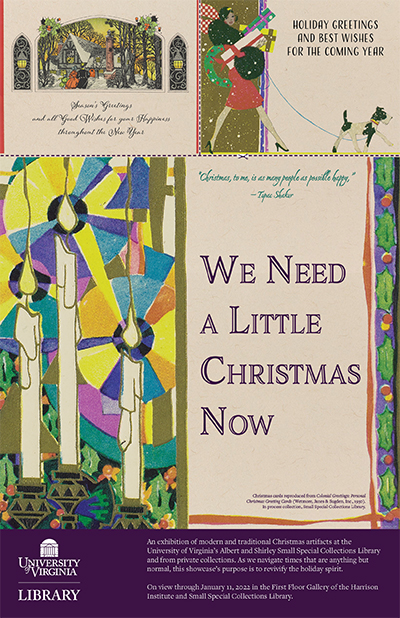
The lyrics above were written nearly 60 years ago (for the Broadway musical “Mame”) but the words feel timely. After nearly three years of a global pandemic and a tragic semester on Grounds, the University of Virginia Library invites visitors to find a bit of joy in its new exhibition “We Need a Little Christmas Now,” on display in the Albert and Shirley Small Special Collections Library’s First Floor Gallery through late January 2023.
“As we navigate times that are anything but normal, this showcase’s purpose is to revivify the holiday spirit,” said Research Archivist Ervin “EJ” Jordan, who co-curated the exhibition with Reference Librarian Regina Rush. “We Need a Little Christmas Now” features nearly 100 objects from Special Collections and private collections, organized by seven themes: “A Dickens of a Christmas”; “Cards & Carols”; “Santa Claus, the Spirit of Christmas”; “Food, Glorious Food!”; “Home for the Holidays”; “Have Yourself a Mini Little Christmas”; and “O Come All Ye Faithful.”
Jordan and Rush have worked together on numerous Library exhibitions. At the height of the pandemic in December 2020, they partnered (on Zoom) to produce an online exhibition of “Four Festive Seasons,” which explored the history of the four annual winter festivals with similar secular and religious origins: Hanukkah, Winter Solstice, Christmas, and Kwanzaa. Other exhibition collaborations include “Everyday People” and “Sisterhood: Cultural Portraits of African American Women.”
Having explored the full range of winter celebrations in 2020, the two self-described “Christmasphile” co-curators decided to focus on their favorite holiday for this exhibition, sharing some of their personal treasures interspersed with the Library’s holiday collection highlights. Featured objects in “We Need a Little Christmas Now” include a 15th-century French Book of Hours nativity scene, an 1843 first edition of Charles Dickens’ “A Christmas Carol,” and a Christmas card from Martin Luther King Jr. and his wife Coretta, along with UVA-specific items, such as an 1832 UVA student resolution for a two-week holiday.
“Regina and E.J. are longtime partners in exhibition curation,” said Curator of University Library Exhibitions Holly Robertson, who designed “We Need a Little Christmas Now.” “They have an incredible working relationship in these curatorial endeavors — E.J. mines our archives for spectacular finds in the least suspected collections; Regina has an amazing depth of knowledge of local/regional history and its genealogical connections. Well known by their colleagues and friends as eager and learned ambassadors of the Christmas spirit, Regina and E.J. have amazing personal collections of holiday cheer and history.”
“We Need a Little Christmas Now” is free and open to the public through Wednesday, Dec. 21, and then will take a break along with the rest of the Library until Jan. 2. In the meantime, we hope all who celebrate will enjoy a little Christmas of their own.
Take a look at some featured objects from the exhibition below.
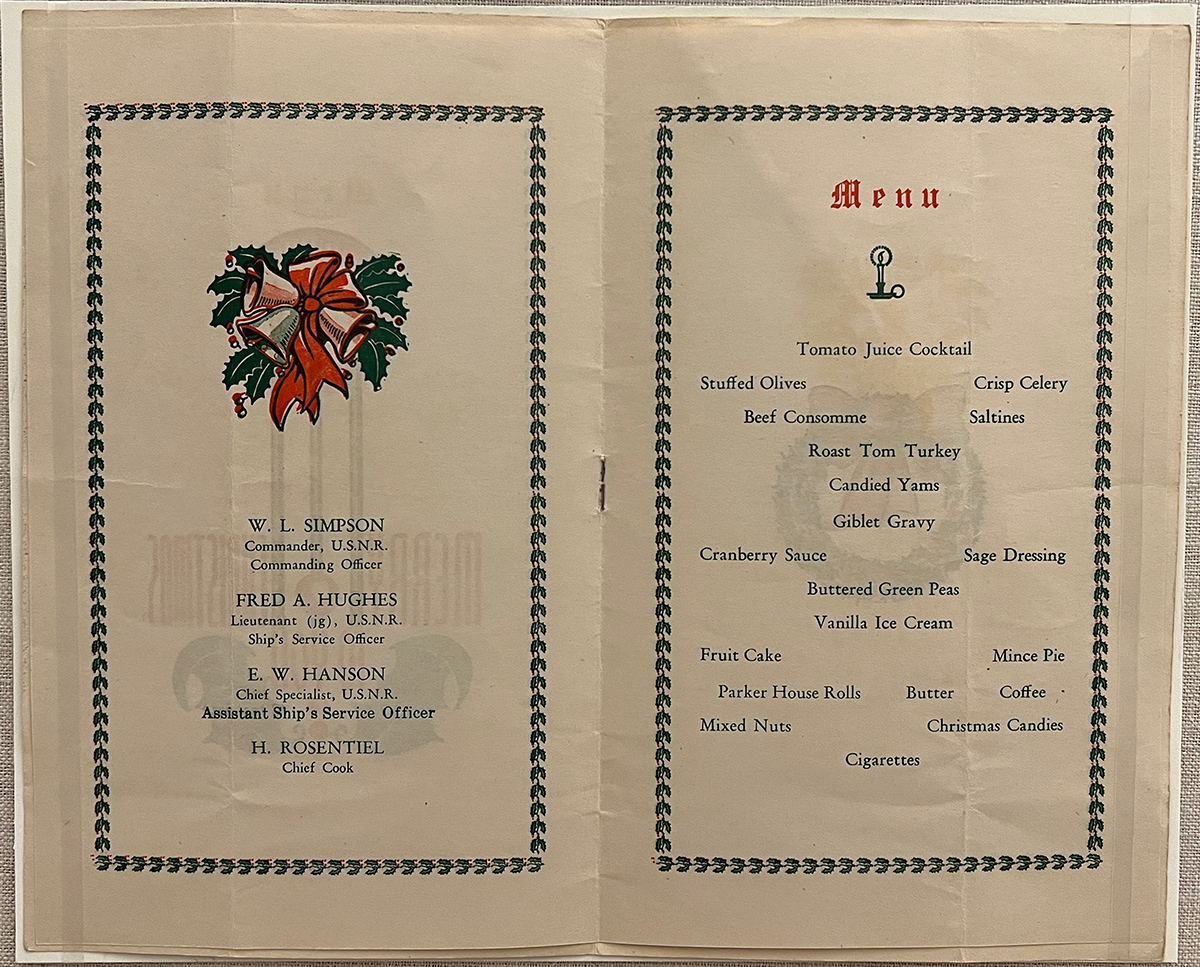
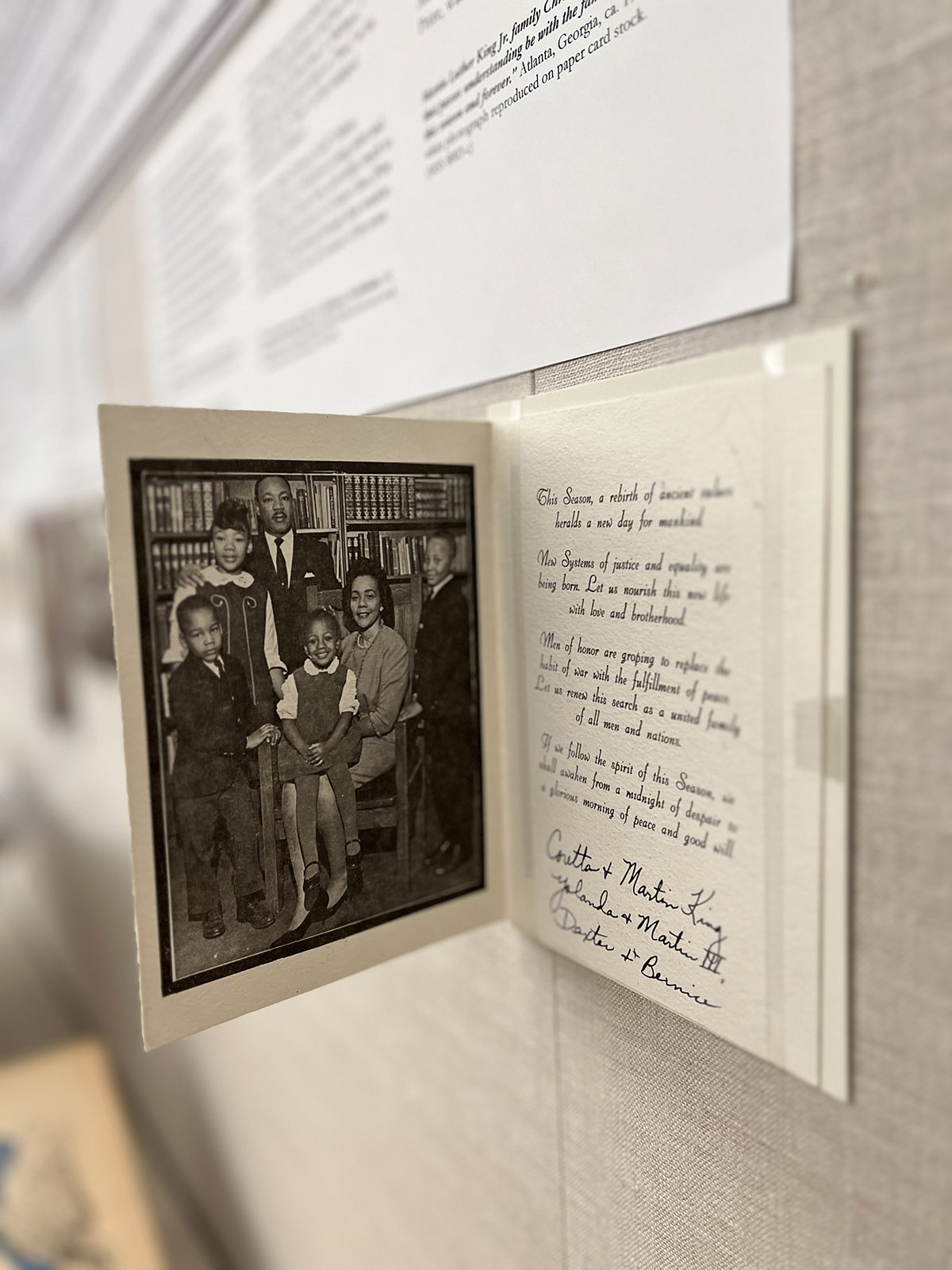
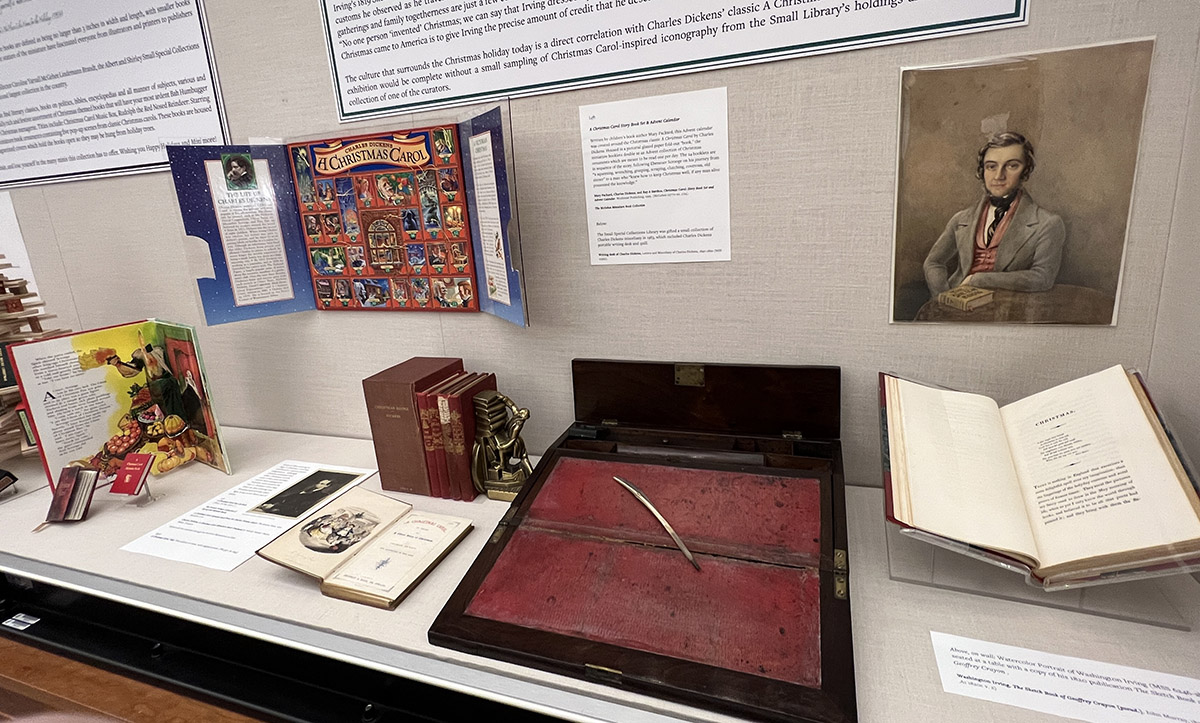
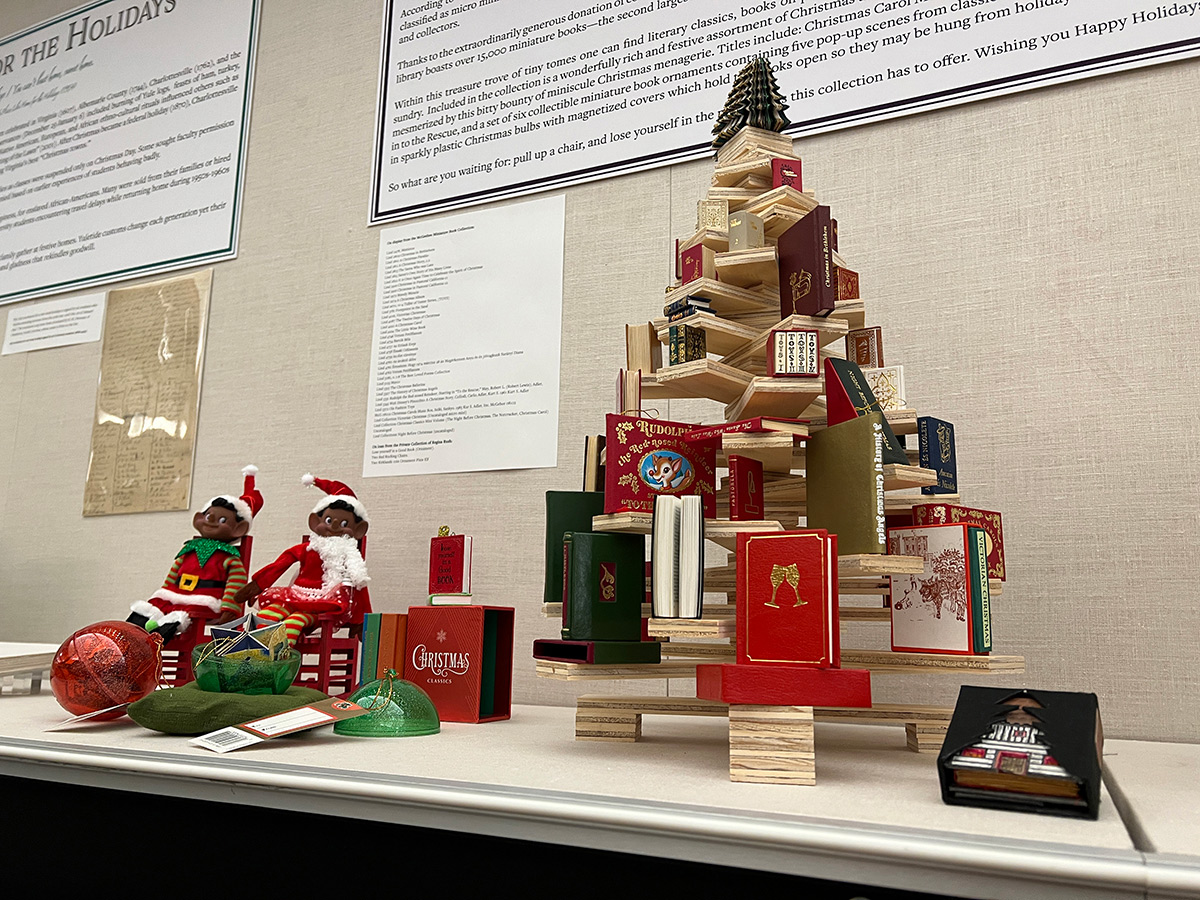
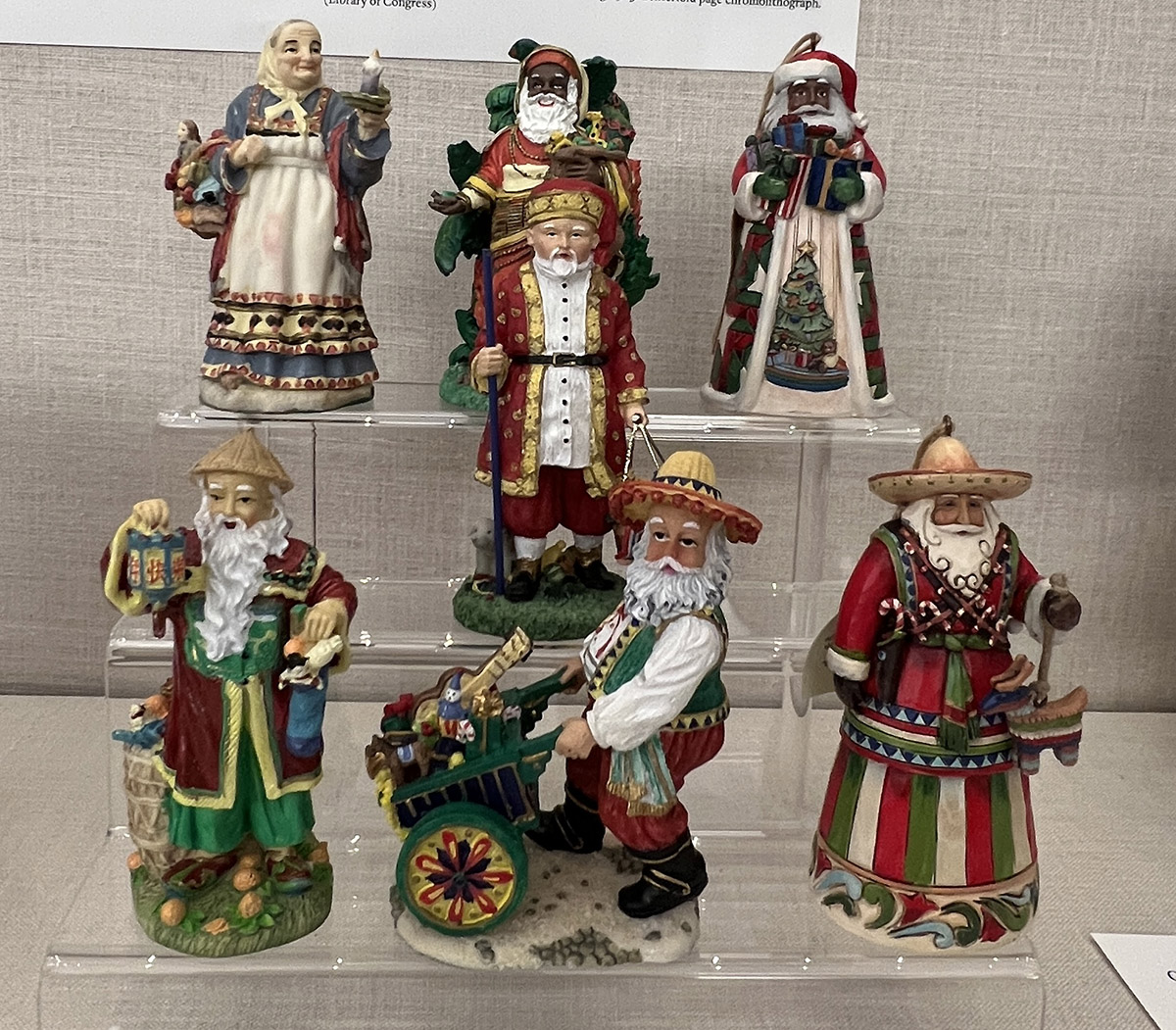
A year-end “Best Books” list from UVA Library
As the University of Virginia community heads toward the holiday break, some might be looking for a good book to read over the quiet string of days before the new year. In the spirit of so many end-of-the-year “best books” lists, we asked UVA Library staff to recommend their favorite books they read in 2022. The books could be any genre, published in any year, so long as they were available in UVA Library’s collections.
Take a look at the recommended books below, and check some out for the holidays. Happy reading!
Recommended by Leigh Rockey, Video Collections Librarian
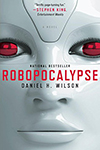 “Robopocalypse” by Daniel H. Wilson (Doubleday, 2011)
“Robopocalypse” by Daniel H. Wilson (Doubleday, 2011)
All the machines in the world start attacking all the humans! It turns out that American Indians, who have passed down traditions about living and fighting on the land, are ready for the challenge. Fun stuff.
“The Dope: The Real History of the Mexican Drug Trade” by Benjamin T. Smith (Black Dog Press, 2021)
You can’t have the wild violence and success of the Mexican drug trade without first having the U.S. myths and money that perpetuate it.
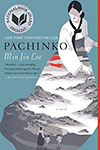 “Pachinko” by Min Jin Lee (Grand Central Publishing, 2017)
“Pachinko” by Min Jin Lee (Grand Central Publishing, 2017)
It sounds like too much to take on — a family history spanning eight decades and many characters — but it’s easily readable and fulfilling.
“Ninth House” by Leigh Bardugo (Flatiron Books, 2019)
What if a university’s secret societies were really keepers of dark magic? You won’t put this thriller down until you know it all.
Recommended by Ervin “EJ” Jordan Jr., Research Archivist, Albert and Shirley Small Special Collections Library
Among the many books I’ve read this year, several were related to Charlottesville, the University of Virginia, and African American history, including but not limited to the five below.
“Rot, Riot, and Rebellion: Mr. Jefferson’s Struggle to Save the University That Changed America” by Rex Bowman and Carlos Santos (UVA Press, 2013)
Yet more scholarly evidence of UVA as a dangerous, rowdy, and complex environment during its first half-century.
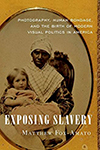 “Exposing Slavery: Photography, Human Bondage, and the Birth of Modern Visual Politics in America” by Matthew Fox-Amato (Oxford University Press, 2019)
“Exposing Slavery: Photography, Human Bondage, and the Birth of Modern Visual Politics in America” by Matthew Fox-Amato (Oxford University Press, 2019)
An exceptional assessment of the process and influence of slave and slavery photography in 19th-century America. This book includes photographs from the Albert and Shirley Small Special Collections Library.
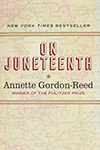 “On Juneteenth” by Annette Gordon-Reed (Liveright Publishing, 2021)
“On Juneteenth” by Annette Gordon-Reed (Liveright Publishing, 2021)
An overview of this Pulitzer Prize-winning historian’s Texas roots and Juneteenth memories. Professor Gordon-Reed is also the leading authority on the Hemings family of Thomas Jefferson’s Monticello.
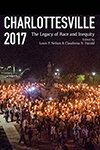 “Charlottesville 2017: The Legacy of Race and Inequity” edited by Louis P. Nelson and Claudrena N. Harold (UVA Press, 2018)
“Charlottesville 2017: The Legacy of Race and Inequity” edited by Louis P. Nelson and Claudrena N. Harold (UVA Press, 2018)
Collected essays on the University of Virginia’s legacies of slavery and racism in the wake of the August 2017 Unite the Right white supremacist rallies.
“Bridge Builders, 2001-2016, Charlottesville, VA” edited by Kay Slaughter. (Preservation Piedmont, 2019)
The Drewary J. Brown Bridge on West Main Street is a memorial with bronze plaques honoring several residents who as “Bridge Builders” overcame racial differences to make Charlottesville more racially, economically, socially, and culturally equitable. This fine illustrated book shares their stories.
Recommended by Sherri Lynne Brown, Librarian for English
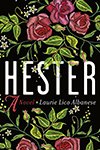 “Hester: A Novel” by Laurie Lico Albanese (St. Martin’s Press, 2022)
“Hester: A Novel” by Laurie Lico Albanese (St. Martin’s Press, 2022)
The vein of feminism running through this imagined origin story of Nathaniel Hawthorne’s “The Scarlet Letter” struck a chord with me.
“Dolores Claiborne” by Stephen King (Viking, 1992)
I’ve been reading some of King’s earlier works this year, and this novel’s plot twists made it one of my favorites.
“The Bachman Books: Four Early Novels” by Stephen King (New American Library, 1985)
This collection of short early novels by King also left a lasting impression — “The Long Walk” was exquisitely disturbing.
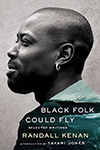 “Black Folk Could Fly: Selected Writings” by Randall Kenan (W. W. Norton, 2022)
“Black Folk Could Fly: Selected Writings” by Randall Kenan (W. W. Norton, 2022)
This posthumously published collection of essays solidifies that this world lost a great writer much too soon.
Recommended by Josh Thorud, Multimedia Teaching & Learning Librarian
“The Indifferent Stars Above” by Daniel James Brown (William Morrow, 2009)
The author has a beautiful writing style and delves into historical details that deeply enrich the story. While what happened to the Donner Party is grim, this book humanizes the people in it. An enthralling and ultimately harrowing account that ranks among my favorite historical nonfiction books.
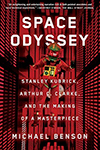 “Space Odyssey: Stanley Kubrick, Arthur C. Clarke, and the Making of a Masterpiece” by Michael Benson (Simon & Schuster, 2018)
“Space Odyssey: Stanley Kubrick, Arthur C. Clarke, and the Making of a Masterpiece” by Michael Benson (Simon & Schuster, 2018)
One of the best books about the making of a film I’ve ever read. This is an eye-opening account of how “2001: A Space Odyssey” was written, filmed, and edited with lots of interesting details, including countless difficulties and bold technical innovation in sets and special effects. Rather than a hagiography of Stanley Kubrick, it shows the many minds and talents involved in creating this classic film that changed the industry forever.
Recommended by Carla Lee, Deputy Librarian
 “Horse” by Geraldine Brooks (Viking, 2022)
“Horse” by Geraldine Brooks (Viking, 2022)
I was a big fan of “People of the Book” and this book has a similar structure — several stories from different times, all tied back to discovering the provenance of a cultural object. Like a lot of historical fiction, it is highly emotional, but also taught me about perspectives in history.
On a lighter note:
“The Man Who Died Twice” by Richard Osman (Pamela Dorman Books, 2021)
This is the second in a series and I recommend reading “The Thursday Murder Club” first, if possible. These cozy mysteries both involve a fun cast of characters and a sense of humor that hits me just right.
Recommended by Bret Heddleston, Print Periodicals Specialist
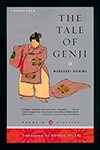 “The Tale of Genji” by Murasaki Shikibu, translated by Royall Tyler or Arthur Waley
“The Tale of Genji” by Murasaki Shikibu, translated by Royall Tyler or Arthur Waley
“While the Aelfrics and the Aelfreds croaked and coughed in England, this court lady, about whom we know nothing … was sitting down in her silk dress and trousers with pictures before her and the sound of poetry in her ears, with flowers in her garden and nightingales in the trees, with all day to talk in and all night to dance in — she was sitting down about the year 1000 to tell the story of the life and adventures of Prince Genji.”
-Virginia Woolf, “Review of ‘The Tale of Genji,’” 1925
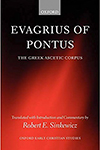 “Evagrius of Pontus: The Greek Ascetic Corpus” by Robert E. Sinkewicz (Oxford University Press, 2003)
“Evagrius of Pontus: The Greek Ascetic Corpus” by Robert E. Sinkewicz (Oxford University Press, 2003)
Read especially for the apothegms “On the Eight Thoughts,” which are instructive, convicting, and easy to remember. This list of vices was later known as the “seven deadly sins.”
“Jack the Fatalist and His Master: A New Translation From the French of Denis Diderot” translated by Wesley D. Camp and Agnes G. Raymond (P. Lang, 1984)
A satirical account of the adventures of a Determinist servant in 18th-century France; its self-referential humor may remind the reader of postmodern drama like “Waiting for Godot.”
 “Jenny” by Sigrid Undset, translated by W. Emme (A. A. Knopf, 1921)
“Jenny” by Sigrid Undset, translated by W. Emme (A. A. Knopf, 1921)
A remarkably dark and psychologically acute portrait of a young Norwegian artist living among fellow expatriates in Rome at the beginning of the 20th century.
“Phantastes and Lilith” by George MacDonald (W. B. Eerdmans, 1964)
Two novels in the Victorian fairy tale style; they share a distinctive, multivalent, spiritual symbolism.
Recommended by a Library staff member who would prefer to remain anonymous:
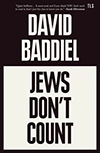 “Jews Don’t Count: How Identify Politics Failed One Particular Identity” by David Baddiel (TLS Books, 2021)
“Jews Don’t Count: How Identify Politics Failed One Particular Identity” by David Baddiel (TLS Books, 2021)
This is an important publication by British comedian David Baddiel highlighting recent examples of the rise in antisemitism across the globe, how this trend is taking place across both ends of the political spectrum, and the importance of being able to recognize it and call it out.
Renovation marches on as key pieces are put into place

The UVA Library inhabits more than five locations, including Brown Science and Engineering Library, Clemons Library, Fine Arts Library, Music Library, and Harrison/Small Special Collections Library; plus professional libraries like Health Sciences, Darden, and Law. The main library, Alderman, was closed in early 2020 for renovation, and work continues apace as staff members prepare to move into the space (along with books and services) in late 2023 and early 2024.
In October, massive skylight frames were lifted into the historic lightwells, which will allow the new library to feature weather-protected study space under open skies.
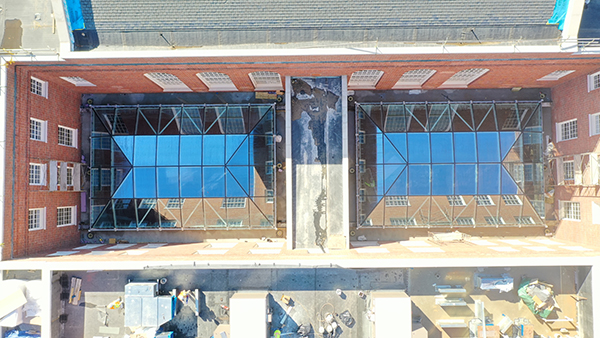
This summer, a beam signed by construction personnel and Library staff was hoisted to the top of the building as part of a “topping-out ceremony” marking installation of the highest point in the new building.

Read more individual stories about the renovation from UVA Today or Library Communications, or read about the renovation on the Library’s website.
Processing Grief Through Books, Films, and Art
The University of Virginia Library joins the UVA community in grieving three students — second-year Devin Chandler, third-year Lavel Davis Jr., and fourth-year D’Sean Perry — victims of a mass shooting on Grounds Sunday night. Two other students were wounded.
“I weep for the parents, the grandparents, the siblings and friends of all the victims,” said Dean of Libraries John Unsworth in a message to Library employees. “Please take care of yourself and those around you.”
We asked several UVA librarians to recommend books, films, television shows, and art projects to help those who are struggling in the wake of this tragic, violent event. “In tough times we often turn to stories to help us process grief and loss,” said Ashley Hosbach, Education and Social Science Research Librarian, who will host a virtual community read aloud event featuring comforting books for children tonight at 7 p.m..
Take a look at our librarians’ recommendations below:
Recommended by Haley Gillilan, Undergraduate Student Success Librarian
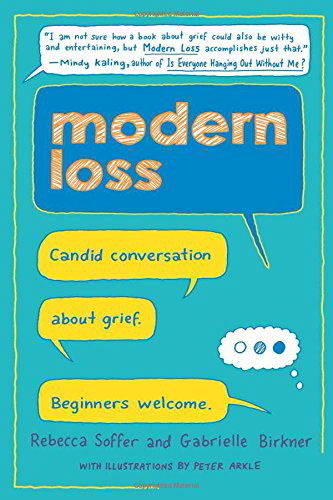 “Modern Loss: Candid Conversation About Grief” Rebecca Soffer & Gabrielle Birkner (Harper Wave, 2018)
“Modern Loss: Candid Conversation About Grief” Rebecca Soffer & Gabrielle Birkner (Harper Wave, 2018)
This is an interactive workshop book about grief and loss. Modern Loss is also an online community and on Instagram by the same name.
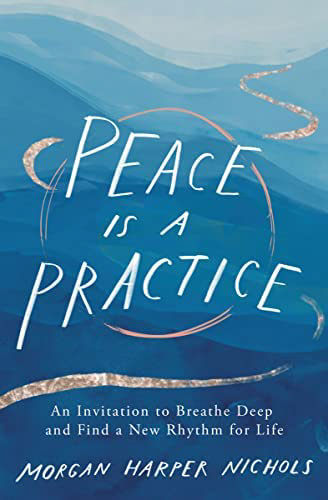 “Peace is a Practice” by Morgan Harper Nichols (Zondervan, 2022)
“Peace is a Practice” by Morgan Harper Nichols (Zondervan, 2022)
Nichols is an artist and poet (she also has an incredible Instagram account). Her book is about building towards peace as a discipline, both internally and communally, during troubled times and uncertainty.
“I Thought I’d Get to See My Mother Again. Then the Pandemic Hit” (Time Magazine, 2020)
Nicole Chung, whose memoir “All You Can Ever Know” explores the complexities of transracial adoption, writes beautifully about the loss of her parents in this article. “Since she died, many people have asked me if I feel a lack of ‘closure’ because of all the moments missed,” Chung writes. “My father died 2½ years ago, and I was at his funeral, and I still don’t feel anything like closure. It’s an open wound. It always will be.”
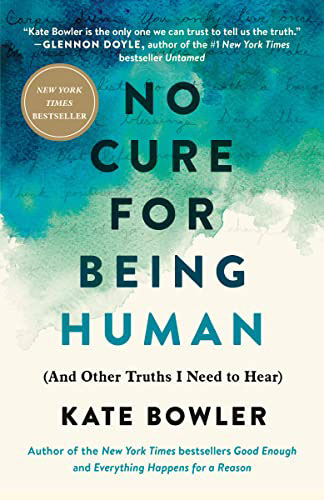 “No Cure for Being Human” by Kate Bowler (Random House, 2021)
“No Cure for Being Human” by Kate Bowler (Random House, 2021)
Bowler’s memoir is about accepting how her life has changed since having cancer. She also has a magnificent podcast called “Everything Happens,” where she interviews people about loss and grief. She’s based at Duke University and has interviewed folks from our UVA community, including Taylor Harris and Katie Couric.
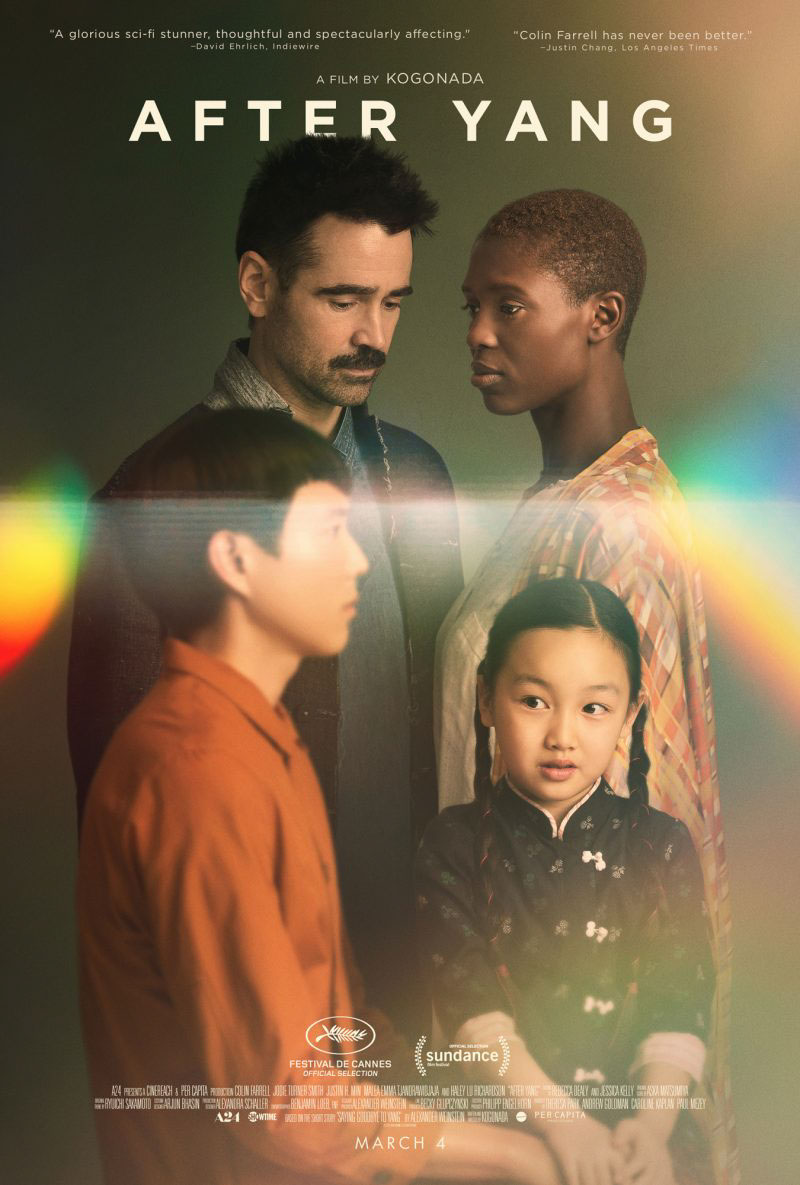 “After Yang” (A24, 2022)
“After Yang” (A24, 2022)
A24 summary: When his young daughter’s beloved companion — an android named Yang — malfunctions, Jake (Colin Farrell) searches for a way to repair him. In the process, Jake discovers the life that has been passing in front of him, reconnecting with his wife (Jodie Turner-Smith) and daughter across a distance he didn’t know was there.
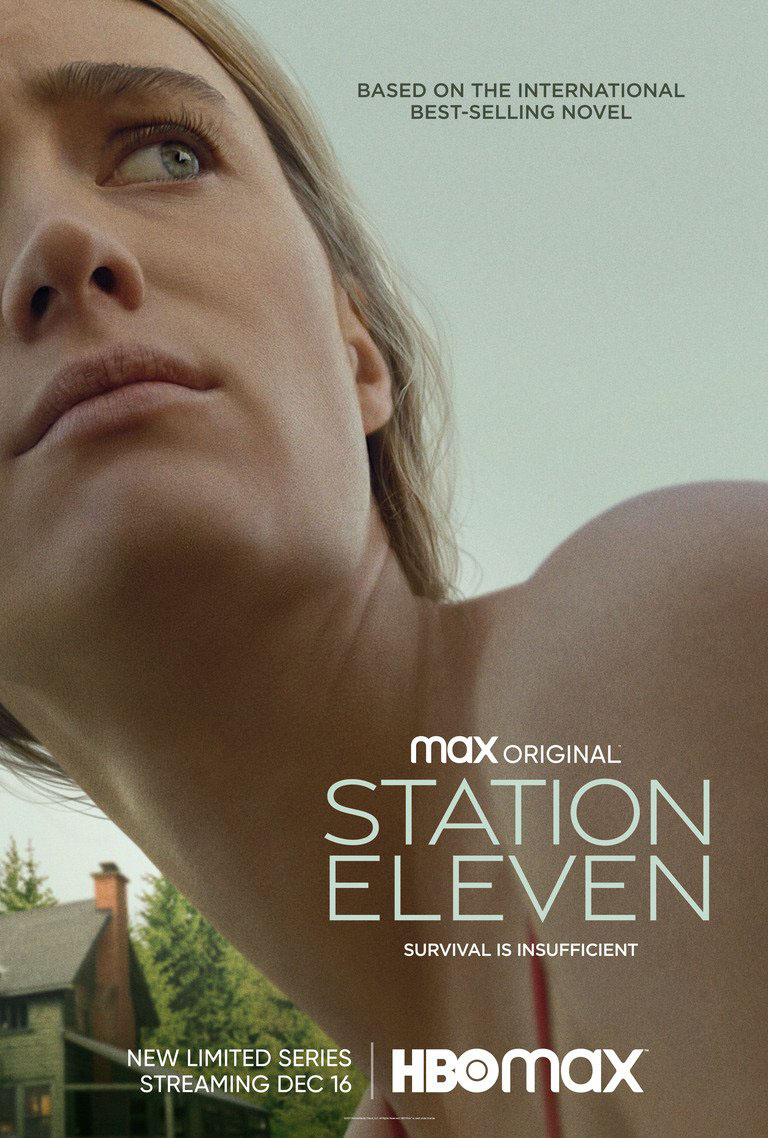 “Station Eleven” (HBO Max 2021)
“Station Eleven” (HBO Max 2021)
HBO Max summary: A post-apocalyptic saga spanning multiple timelines, this limited drama series tells the stories of survivors of a devastating flu as they attempt to rebuild and reimagine the world anew while holding on to the best of what’s been lost. “Station Eleven” is based on the international bestseller of the same name by Emily St. John Mandel.
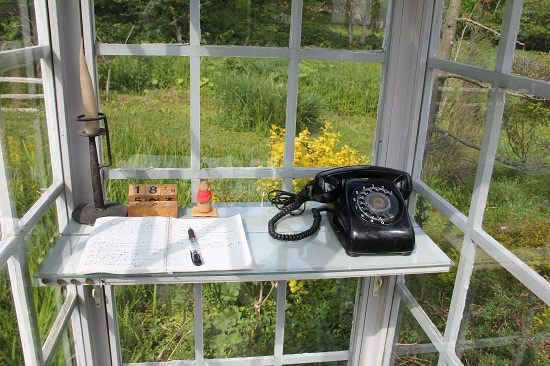 “Wind Telephone” (Itaru Sasaki, 2010)
“Wind Telephone” (Itaru Sasaki, 2010)
Japanese artist Itaru Sasaki was mourning his deceased cousin and so he decided to create a telephone booth with a rotary phone to “call” him when he wanted to speak with him. This has sparked many communities to create their own wind phones; there are a couple on the Appalachian Trail and one in Priest Point Park in Olympia, Washington.
Recommended by Amy Hunsaker, Librarian for Music & the Performing Arts
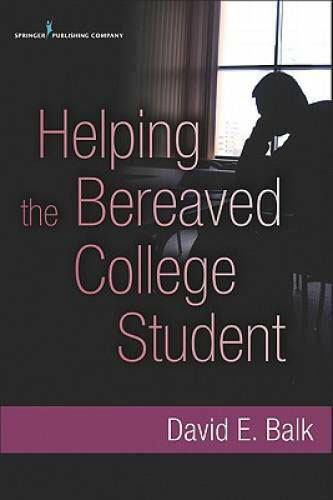 “Helping the Bereaved College Student” by David E. Balk (Springer, 2011)
“Helping the Bereaved College Student” by David E. Balk (Springer, 2011)
Publisher’s summary: Approximately one-fourth of all college students suffer the loss of a family member or friend during their college career, yet the prevalence of bereavement on the college campus is largely unrecognized — sometimes by even the bereaved students themselves. This is the only volume to comprehensively address the ways in which bereavement may affect the college student, and to guide mental health professionals in effectively treating this underserved population. Authored by an internationally known expert on bereavement, the book includes student narratives, treatment exercises and activities, and issues regarding self-disclosure.
“We Don’t ‘Move on’ From Grief. We Move Forward with It” by Nora McInerny (TED Talk, 2020)
TED summary: In a talk that’s by turns heartbreaking and hilarious, writer and podcaster Nora McInerny shares her hard-earned wisdom about life and death. Her candid approach to something that will, let’s face it, affect us all, is as liberating as it is gut-wrenching. Most powerfully, she encourages us to shift how we approach grief. “A grieving person is going to laugh again and smile again,” she says. “They’re going to move forward. But that doesn’t mean that they’ve moved on.”
Recommended by Ashley Hosbach, Education & Social Science Research Librarian
The following children’s books on processing grief, loss, and sadness are from our COVID collection.
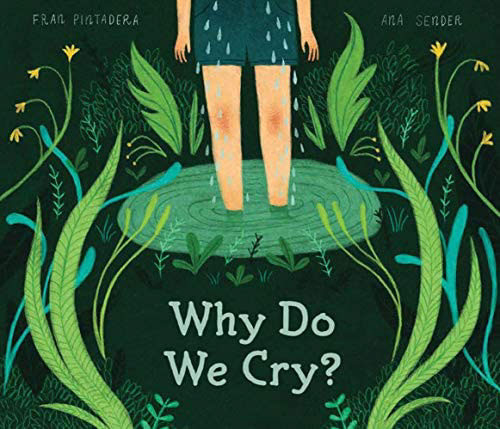 “Why Do We Cry?” by Fran Pintadera (Kids Can Press, 2018)
“Why Do We Cry?” by Fran Pintadera (Kids Can Press, 2018)
Publisher’s summary: This sensitive, poetic picture book uses metaphors and beautiful imagery to explain the reasons for our tears, making it clear that everyone is allowed to cry, and that everyone does.
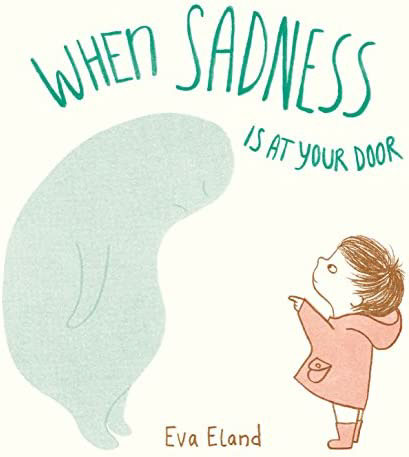 “When Sadness Is at Your Door” by Eva Eland (Random House Children’s Books, 2019)
“When Sadness Is at Your Door” by Eva Eland (Random House Children’s Books, 2019)
Publisher’s summary: Sadness can be scary and confusing at any age. When we feel sad, especially for long periods of time, it can seem as if the sadness is a part of who we are — an overwhelming, invisible, and scary sensation. Eva Eland’s debut picture book is a great primer in mindfulness and emotional literacy, perfect for kids navigating these new feelings — and for adult readers tackling the feelings themselves!
“The Breaking News” by Sarah Lynne Reul (Roaring Brook Press, 2018)
Publisher’s summary: When devastating news rattles a young girl’s community, her normally attentive parents and neighbors are suddenly exhausted and distracted. At school, her teacher tells the class to look for the helpers — the good people working to make things better in big and small ways.
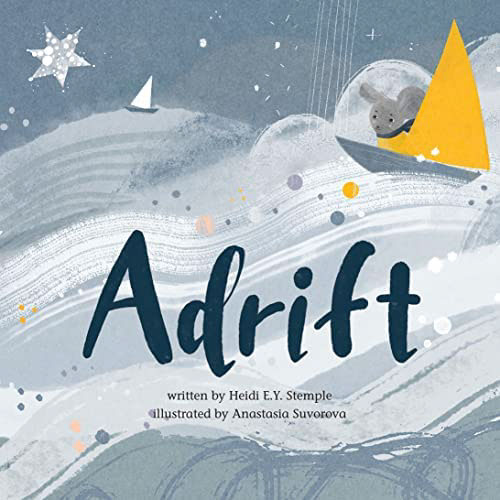 “Adrift” by Heidi Stemple (Crocodile Books, 2021)
“Adrift” by Heidi Stemple (Crocodile Books, 2021)
Publisher’s summary: In this metaphor for the global pandemic and the power of community, a mouse in a small boat finds comfort and strength during a storm when he sees another boat and is joined by others, close enough to see each other, but not close enough to crash.
The full list of children’s books addressing grief and loss is on our guide, open to the public.
Register here for Ashley Hosbach’s Community Read Aloud event.
The University of Virginia will hold a public memorial service for Chandler, Davis, and Perry on Saturday at 3:30 p.m. at John Paul Jones Arena.
Digital Humanities at 30: A Roundtable

With the click of a mouse, fans of William Faulkner can listen to the author carefully explain the pronunciation of “Yoknapatawpha,” the fictional Mississippi county where many of his novels are set, his reedy voice seeming to time travel into the 21st century. University of Virginia students in disciplines ranging from architectural history to civil engineering are digitizing the past by taking 3D scans of local historic buildings to preserve cultural heritage data for future generations. And earlier this fall, the work of an eighth-grade civics class in North Andover, Massachusetts, led to the exoneration of the last remaining convicted “witch” in the Salem Witch Trials using documents from a UVA archive.
These are just a few examples of digital humanities (DH) projects supported by the University of Virginia Library. Through the Scholars’ Lab and the Institute for Advanced Technology in the Humanities (IATH), Library specialists help scholars and students use digital tools to conduct humanities-based research, offering fellowships to graduate students and faculty members. The Library also offers an extensive guide for those interested in digital humanities research.
On Saturday, Nov. 12, the University of Virginia will celebrate 30 years of digital humanities with a day-long conference in the Albert and Shirley Small Special Collections Library. The conference will feature scholars from across the country as well as representatives from the National Endowment for the Humanities and the Andrew W. Mellon Foundation. The conference is open to the public; in-person and virtual seats are still available (registration is required).
We reached out to UVA Library staff members who are deeply involved with digital humanities work to learn more about the discipline. An edited version of our conversation is below:
Q. How do you define “digital humanities,” exactly?
A. Sarah Wells, Scholarly and Technical Communications Officer, IATH: In general, digital humanities involves using digital tools to carry out humanities-based research, which seems like a fairly simple task. But for much of what is done at IATH and other DH groups at UVA, there is a transformative aspect: it allows you to approach and think about materials in new ways, possibly in ways that were previously impossible. You can bring together fragments of information and disparate sets of data and collaborate much more effectively and deeply with people outside your discipline, institution, and country.
Brandon Walsh, Head of Student Programs, Scholars’ Lab: I’m a big fan of a definition that I’ve heard articulated by [scholars] Roopika Risam, Liz Grumbach, and others. It’s a prepositional one. Digital humanities consists of asking humanities questions with technology as well as asking humanities questions of technology. There’s also a strong activist element that serves to surface the humans behind the work that we do, critiquing labor structures especially.
Sherri Brown, Research Librarian for English and Digital Humanities: Defining digital humanities has long been bemoaned in the DH community. The understanding I gravitate toward comes from the goals of DH discussed in the introduction to the 2004 book “A Companion to Digital Humanities” by Susan Schriebman, Ray Siemens, and our own Dean of Libraries John Unsworth: “Using information technology to illuminate the human record, and bringing an understanding of the human record to bear on the development and use of information technology.”
Q. Why do digital humanities matter?
A. Amanda Visconti, Managing Director of the UVA Scholars’ Lab: DH is a field that not only connects folks with the necessary ethical, technical, and disciplinary skills to address urgent questions around data and social justice — it’s also a home for many folks who uniquely have both technical and research skills.
DH is also an active international scholarly community that values collaboration, credit, openness about failure, open access, and sharing research progress publicly (success and failure) in real time rather than just when a study is concluded. This includes lots of blogging and tweeting and attention toward improving social justice.
Alison Booth, Professor of English and Academic Director of the Scholars’ Lab: Scholarly communication and more democratic access to resources for learning will foreseeably depend on digitized resources and new media in the coming century. Most areas of humanities research are transformed by digital means of accessing archives and collections. And digital humanities students gain skills useful for many kinds of careers; they are not only learning STEM subjects but the full range of liberal arts.
Walsh: Digital humanities can help us make sense of the vast cultural record we possess, critique the digital landscape as it unfolds around us, and project a better, more equitable future for higher education.
Worthy Martin, Director of IATH: Computationally mediated scholarship matters across almost all disciplines because it can allow for research questions that have long been of interest but not previously practical to undertake. For example, The Chaco Research Archive makes possible comparative analysis of archaeological sites in Chaco Canyon that were excavated decades apart and for which the documentary records of those excavations are held in multiple archives and repositories.
Q. What are some of the most important projects that have come out of the Scholars’ Lab?
A. Visconti: I’m going to make a numbered list to respond.
- The Scholars’ Lab itself has been a significant model to other institutions; we usually have one to three requests per month to advise external leaders and organizations on digital scholarship initiatives and research. We have an active social media presence — more than 6,000 followers on Twitter, and an active research blog. Our staff are leaders in their fields, with frequent elected and appointed service in international scholarly organizations and research publications.
- Our Neatline software for telling stories in time and place.
- Our Praxis Program, now over a decade old, proved you could bring a cohort of graduate students from knowing nothing about DH/tech to releasing a collaborative DH project over the course of a year — many current DH graduate training programs are informed by this work.
- We started one of the early humanities-focused makerspaces.
- We regularly provide cutting-edge spatial technologies fieldwork, training, and research, partnering with UVA faculty and students and regional community members to tell stories about, discover, and preserve our past history.
Walsh: Bar none our most important projects are the people we’ve worked with, especially the students and early career scholars. Our fellowship programs are in their second decade and represent our best efforts to help prepare future generations of scholar-practitioners. The Praxis Fellowship, our soup-to-nuts introduction to digital humanities by way of project-based pedagogy, is especially well known as a teaching intervention. More than any individual research project, our efforts to support others and pay forward our own training will be how we are remembered.
Q. What are some of the most important projects that have come out of the Institute for Advanced Technology in the Humanities?
A. Martin: The “importance” of IATH projects comes in several varieties:
- Important for being very early DH projects: The Rossetti Archive and The Valley of the Shadow (the first two IATH Fellows’ projects that started in 1992).
- Important for resulting in a major resource for a very broad community: Digital Yoknapatawpha, Social Networks in Archival Context, and Uncle Tom’s Cabin.
- Important for making accessible very complex materials and critical analysis of those materials: Collective Biographies of Women, Piers Plowman, and Leonardo’s Treatise on Painting.
- Important for investigating innovative interpretive modalities, for example, “multi-works” in the Rossetti Archive and “place-based concepts” in Mapping Imagined Geographies of Revolutionary Russia.
Q. What does the future of digital humanities look like?
A. Brown: Although we’re celebrating 30 years of DH at UVA, I still think digital humanities is in its infancy in terms of how much can be done with it. I am always amazed by the creativity I see in DH projects, methods, and tools. We have centuries of human cultural production to view through a DH lens and hopefully to share more widely. Take any one novel, and you could use DH methods and tools to look at it critically hundreds of different ways, depending on your interest. And that’s just one novel.
Booth: I foresee ways to get beyond data visualizations indebted to medicine or sociology. I hope for even more innovative use of virtual reality, sound, and even smell to enhance historical representations, performances, and creative expressions of all kinds.
Visconti: The future of DH relies on it not being just about its mixture of tech and cultural research, but in its attention as a community to building better systems that support more people having the material means to participate in its learning and research.
Walsh: Given the multiple, ongoing crises in and out of academia in the present, the future of digital humanities is one that further engages in the pursuit of equity and justice in higher education. The future belongs to the students we equip to help shape it, and we have a responsibility to help ensure it is a livable one.
Click here to see a full schedule for this Saturday’s “Thirty Years of Digital Humanities” conference and register to join in person or online.
Browse by category
Browse by date
- November 2018 (1)
- August 2019 (1)
- November 2019 (1)
- January 2020 (1)
- November 2020 (1)
- January 2021 (1)
- September 2021 (2)
- October 2021 (1)
- November 2021 (1)
- January 2022 (4)
- February 2022 (2)
- March 2022 (2)
- April 2022 (1)
- May 2022 (3)
- August 2022 (1)
- September 2022 (2)
- November 2022 (4)
- December 2022 (3)
- January 2023 (6)
- February 2023 (9)
- March 2023 (11)
- April 2023 (6)
- May 2023 (4)
- June 2023 (3)
- July 2023 (1)
- August 2023 (3)
- September 2023 (5)
- October 2023 (7)
- November 2023 (3)
- December 2023 (5)
- January 2024 (4)
- February 2024 (8)
- March 2024 (2)
- April 2024 (6)
- May 2024 (4)
- June 2024 (1)
- July 2024 (2)
